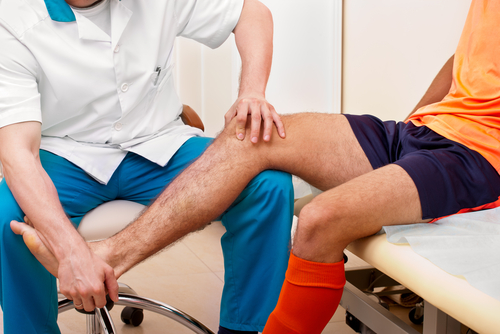
Most patients with OA of the knee require an individual treatment plan based on numerous factors such as weight, exercise capabilities, age, pre-existing health conditions, medical history, and severity of knee joint damage. Most often a combination of regular physical activity, weight loss, physical therapy, strengthening exercises, hot and cold compresses, and prescription medication are prescribed. Also, over-the-counter topical medications like creams, rubs, or sprays can be applied directly to the knee to alleviate pain. OA of the knee sufferers can also get relief from over-the-counter acetaminophen, ibuprofen, and naproxen.
However, if pain is really severe to the point where it’s enabling your life, your doctor may prescribe regular anti-inflammatory medication or steroid injections directly into the knee joint a few times a year. Patients may also benefit from an assistive devices such as crutches or a cane if knee pain is so severe that daily life and movement suffer.
Surgery
A doctor may consider one of the following two surgical options as an extreme resort if knee pain is so bad that it encumbers regular movement and lifestyle:
1. Arthroscopic Surgery
Commonly performed on patients with severe OA of the knee, arthroscopic surgery cleanses the knee joint of damaged cartilage and attempts to repair the surrounding tissues of the knee to restore pain free motion.
2. Knee Replacement Surgery
This surgery is only an option when quality of life suffers due to OA as it actually replaces the damaged knee joint with an artificial model. Because no artificial knee can replace a real knee joint, this surgery is only an option for severe pain cases in order to relieve pain and restore a fraction of basic movement and function to the joint.



